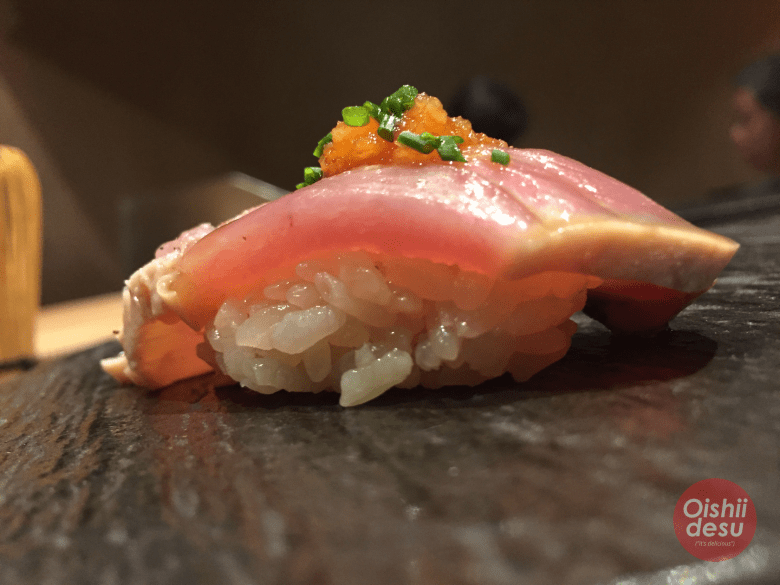Ex’s and family won’t hear me say the “L” word which is why I can not believe I put off doing a post on chef Mitsunori Kusakabe
I realized I didn’t do one for this reason, the pictures that I have will not do Kusakabe justice because I took them all with my iPhone 6 at the time. Even though I work with a Canon 7D, I’m not going to be that obtrusive and obnoxious person who shoots pics with a large camera while others are trying to eat, so I opted for the subtle approach. A smart phone, the chosen method for being low-key and shirtless bathroom selfies.

Kaiseki is seasonal, so the dishes will change based upon the season, and the pics below are primarily from a visit way back in December a couple of years back although I snuck in couple more from a visit in May and maybe one other time.

I wish I was a journalist or somebody who knew a lot, that way I could elaborate more on Kusakabe, but hopefully the reason why I like Kusakabe so much will come through.

Many sushi bars do “omakase,” but I love that Kusakabe mixes kaiseki cuisine in.

At the core of kaiseki cuisine is a focus on the natural ingredients flavor at the peak of its freshness.

Kaiseki is also a multi-course meal which will highlight five colors (expressed through dishes: white, black, yellow, red, and green), five tastes (balance of tastes of sweet, salty, sour, bitter, and spicy), five senses (taste, smell, vision, hearing, and touch), and five methods (roast, steam, fry, simmer, and raw).

First things first, a beer… I got to stimulate my five states of drinking (I need a drink, that hit the spot, buzzed, you’re looking really good, to I don’t remember that, what did I do!?!). Btw, this is not part of kaiseki, just in case you didn’t realize that.
Sushi Prelude
A zuke chutoro and two kinds of seasonal sushi.

Now on to the food. First up, tuna that is blanched and marinated in a marinade that’s typically of shoyu and mirin.


Kaiseki balances appearance, colors of the food with taste and texture, but a lot of the places I had been to in Japan were extremely meticulously prepared and were great to look at, but they could not compare to Kusakabe’s talent for the other aspects of kaiseki (most importantly taste).

Sashimi
Maguro tuna and chill.




Soup
This might be the “futamono”



Hassun, the second course
The seasonal platter.


I didn’t know anything about Shigoku oysters, so I had to look it up. What I found out is that they are farm raised and tumbled during it’s grow-out phase, and they are raised in coastal Willapa Bay and Puget Sound. If none of that makes sense and only the locations register, try checking out Bill the Oysterman’s website.







Warm dish
I’ve included a pic of a previous time, aside from my visit in December.


-

They supposedly snuck in some cod semen (shirako) somewhere, but all I can say was that this Hokkaido cod was amazing.
Sushi
Three kinds of seasonal sushi of the day.







Sushi Finale
I got a choice between bluefin fatty tuna or grade A5 Miyazaki wagyu beef. If I had David Choe Facebook money, I’d do both, along with some strippers (I joke, well 12% joking, there’s always truth to jokes).




BTW, I’m glad I switched to a smaller and more covert mirrorless camera a while back, so that’s my go to now for Tinder and shooting pics of yellowtail.
Kusakabe
Directly across the street from the Transamerica building.
584 Washington St
San Francisco, CA 94111
(415) 757-0155
www.kusakabe-sf.com
Mon-Sat: 5-8:30pm, Sun: closed


